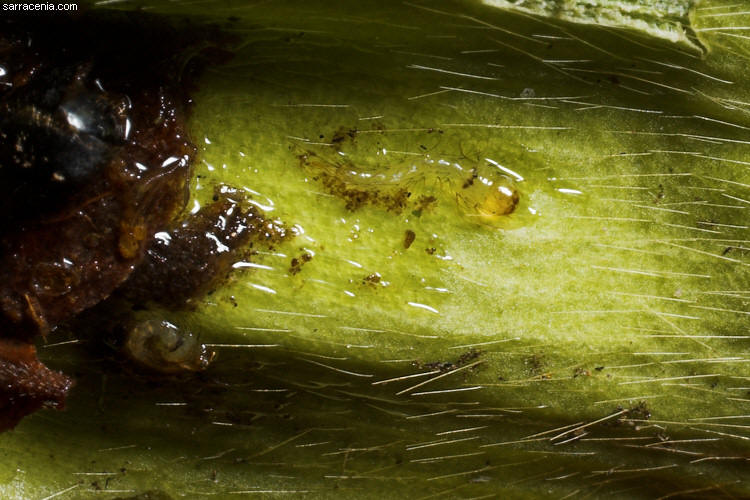|
|
|
|
|
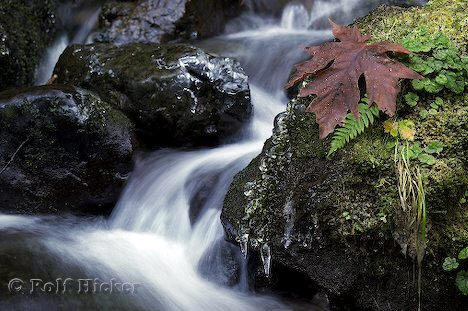 |
|
|
|
|
|
|
| Favorite Friends |
|
|
|
|
Yellow Crab Spider
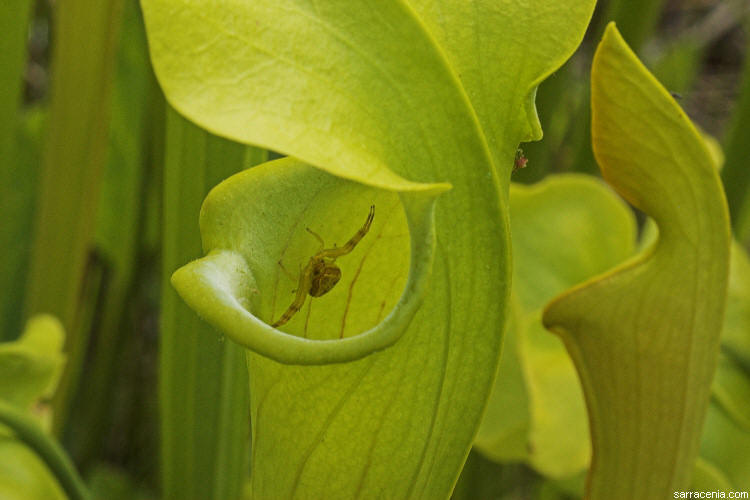 The
yellow crab spider uses the pitcher plant as a home. It has the
capabilities to climb in out of the pitcher plant as long as it doesn't fall
into the liquid. The spider blends into the coloration of the flower and
the pitcher plant and if it feels threatened will seek refuge inside the plant.
It will also steal some of the prey that is caught inside the
plant. The poor defenseless pitcher plant can only prevent this by
changing the position of its lid, which in most cases is a futile gesture.
The
yellow crab spider uses the pitcher plant as a home. It has the
capabilities to climb in out of the pitcher plant as long as it doesn't fall
into the liquid. The spider blends into the coloration of the flower and
the pitcher plant and if it feels threatened will seek refuge inside the plant.
It will also steal some of the prey that is caught inside the
plant. The poor defenseless pitcher plant can only prevent this by
changing the position of its lid, which in most cases is a futile gesture.
These mosquito larvae (Wyeomyia smithii) live in the liquid at the bottom of the pitcher plant and help the pitcher plant digest its food. These larvae also gain some of the nutrients that the prey item is releasing. This is a mutualistic relationship in which the larvae help the plant digest the prey item and the larvae get to absorb some of the prey item's nutrients. There are also several types of bacteria that also live inside the pitcher plant and aid in the digestion of prey.
Western Honey Bee
This honey bee (Apis mellifera) is very important to the Sarracenia alata for two very important reasons. The first reason is that the bee pollinates the flowers of the pitcher plant so that it can reproduce. Secondly the honey bee is a very important prey item that helps the pitcher plant obtain Nitrogen that it can't get from the soil. If this organism were to decrease there would be a severe decline in the Sarracenia alata as well.
- For more information on the Western Honey Bee check out Colin Natrop's web page.
Family:
Venus Flytrap
The Venus flytrap (Dionaea
muscipula) is a plant that is very similar to the pitcher
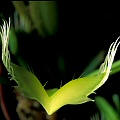 plant.
They both capture insects and digest them in
plant.
They both capture insects and digest them in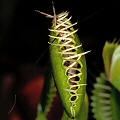 order to obtain their nutrients. One of the major differences between
these plants is their structure. The pitcher plant is shaped like a
pitcher, hence its name. It has a long hollow tube with liquid at the
bottle and adaptations that prevent the prey item from escaping. Whereas
the Venus flytrap has two separate sides that close when a prey item enters.
It also has special clasps that prevent the prey item from escaping.
order to obtain their nutrients. One of the major differences between
these plants is their structure. The pitcher plant is shaped like a
pitcher, hence its name. It has a long hollow tube with liquid at the
bottle and adaptations that prevent the prey item from escaping. Whereas
the Venus flytrap has two separate sides that close when a prey item enters.
It also has special clasps that prevent the prey item from escaping.
- For more information on the Venus flytrap check out Kristi Knoblauch's web page.
Sarracenia rubia
This pitcher plant is very similar to the
Sarracenia alata. Both are pitcher plants that
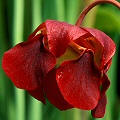 have a long slender body and
a hollow interior. They also both have the same nectar and trapping
techniques that are used to capture their prey.
have a long slender body and
a hollow interior. They also both have the same nectar and trapping
techniques that are used to capture their prey.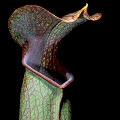 There are some key differences that distinguish the Sarracenia rubia from
the Sarracenia alata. The Sarracenia rubia has deep burgundy
colored flowers and they bloom during April and June, and their overall
color leans more to a red. On the other hand the Sarracenia alata
has yellow colored leaves and they bloom during March and April. Also they
tend to have a more greenish yellow color to their overall body plan.
There are some key differences that distinguish the Sarracenia rubia from
the Sarracenia alata. The Sarracenia rubia has deep burgundy
colored flowers and they bloom during April and June, and their overall
color leans more to a red. On the other hand the Sarracenia alata
has yellow colored leaves and they bloom during March and April. Also they
tend to have a more greenish yellow color to their overall body plan.
- For more information on the Sarracenia alata check out Gerald Malloy's web page.
Several other interesting web pages about other organisms can be found at http://bioweb.uwlax.edu/bio203/
|
|
|
|
|
|
||
